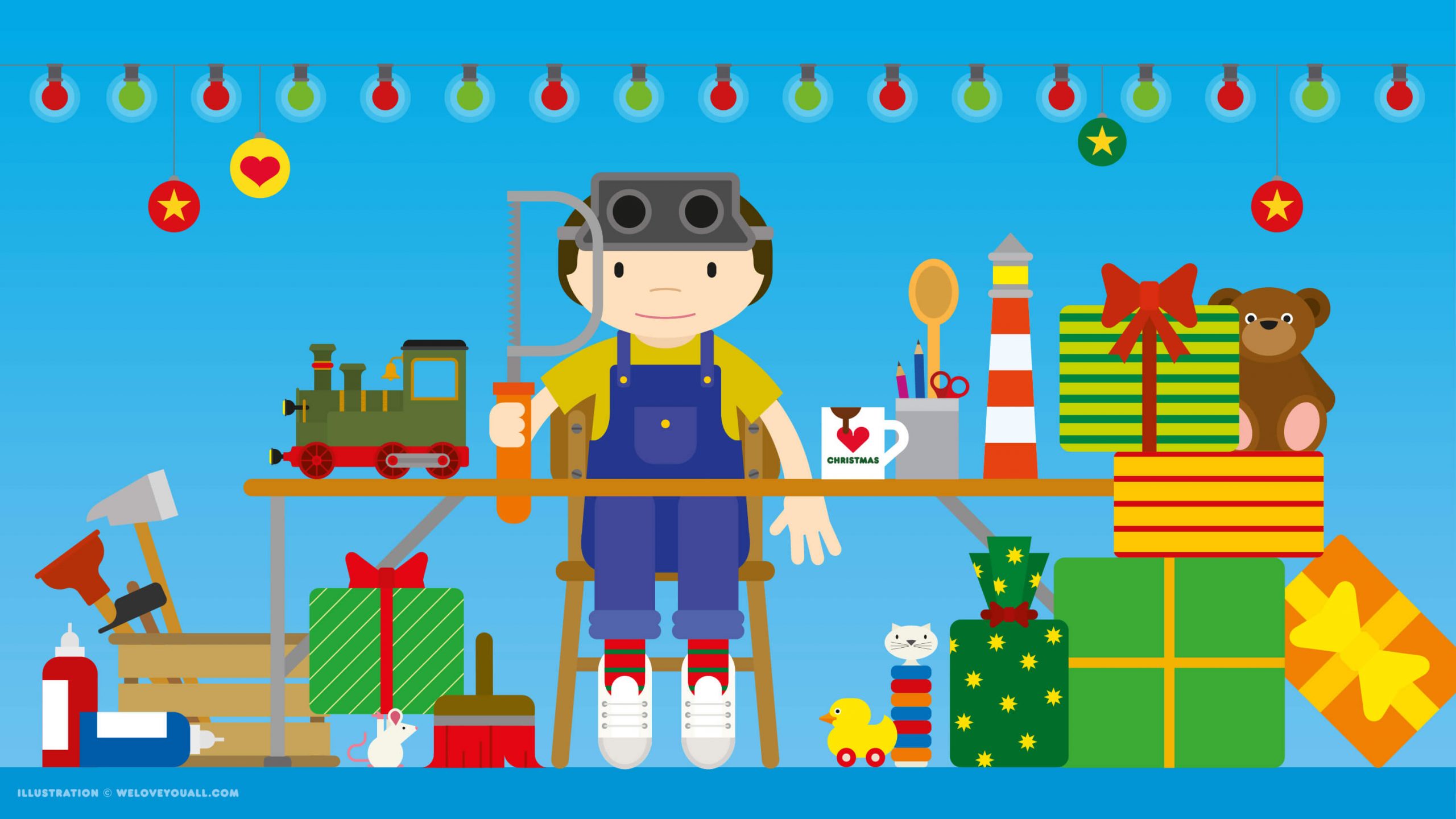
© Friederike Hofmann, MATH+
Author: Tobias Paul (HU Berlin)
Project: The Impact of Dormancy on the Evolutionary, Ecological and Pathogenic Properties of Microbial Populations (EF 4-7)
Challenge
This Christmas season, like all the years before, many presents have to be crafted by the Christmas elves. However, Santa is rather vexed, because it is hard to find qualified staff nowadays—this year there are only 12 elves to take care of the gift production. “If each of my little helpers manages to build one gift a day, we’ll still finish without much trouble,” Santa mumbles into his beard. So in the evening, he places crafting material at each workbench and instructs the twelve elves to finish their assigned gift the next day.
The next morning, the elves come to the workshop one after another. Elf Arvo arrives first and eagerly begins to work on his gift. Next, jolly elf Bjame walks in and sees Arvo already working. Since elves are gregarious chatterboxes, Bjame has a great desire to start a conversation with Arvo. But that would mean he would not be able to start and finish his own gift today—Arvo, on the other hand, would not be distracted by the chit-chat and could continue working on his task. Being on the fence, Bjame is equally likely to decide to either go about his work or talk to Arvo.
When the third elf, Cortie, enters the workshop, he faces a similar choice: should he chat with Arvo, talk to Bjame, or do his assigned work? Regardless of Bjame’s previous decision, Cortie chooses one of the three options with equal probability. (It is worth noting that elves are not at all squeamish and have no problem interrupting conversations or being interrupted).
And so it goes on and on until the twelfth and last elf, Lasse, arrives and has to decide whether he has enough discipline to concentrate on his gift or whether he would rather join one of the other eleven elves. The decision on what to do is again made with equal probability among all the other eleven elves and his gift, regardless of what the elves before him decided.
Elves who are already busy working will not be interrupted by conversations and are able to finish their gift as planned by Santa. On the other hand, no elf who decided to talk to another elf when arriving at the workshop will start working later.
Hence some elves are busy, while some forget the time chatting. In the evening, Santa Claus stops by to check on things and faces quite the chaos: not even close to as many gifts as planned got finished!
Will it still be possible to craft all the presents by Christmas Eve? To answer this question, Santa wants to calculate,
- how many gifts will be finished per day on average (rounded to whole gifts) and
- what is the probability that only one gift will be finished in one day.
Which answer is correct?
Possible answers:
- (a) 3 and (b) \tfrac{1}{24}
- (a) 3 and (b) \tfrac{1}{12}
- (a) 3 and (b) \tfrac{1}{6}
- (a) 4 and (b) \tfrac{1}{24}
- (a) 4 and (b) \tfrac{1}{12}
- (a) 4 and (b) \tfrac{1}{6}
- (a) 5 and (b) \tfrac{1}{24}
- (a) 5 and (b) \tfrac{1}{12}
- (a) 5 and (b) \tfrac{1}{6}
- (a) 6 and (b) \tfrac{1}{24}
Saturday Bonus: For this challenge, you will get a time bonus of 48 hours.
Project reference:
In our EF 4-7 project, The Impact of Dormancy on the Evolutionary, Ecological and Pathogenic Properties of Microbial Populations, we are concerned, among other things, with biodiversity and genetic diversity. In this context, the gifts from the task correspond to genetic mutations in a classical model, the Kingman coalescent. Thus, the number of gifts in question is simply the number of (distinct) mutations in a sample of $12$ individuals. This number can be determined explicitly. As is usual for mathematicians, we are interested in the asymptotic behavior of the number mutations for n \to \infty in a more complex model for rare mutations, the seed-bank coalescent. Here n describes the size of the population under study.